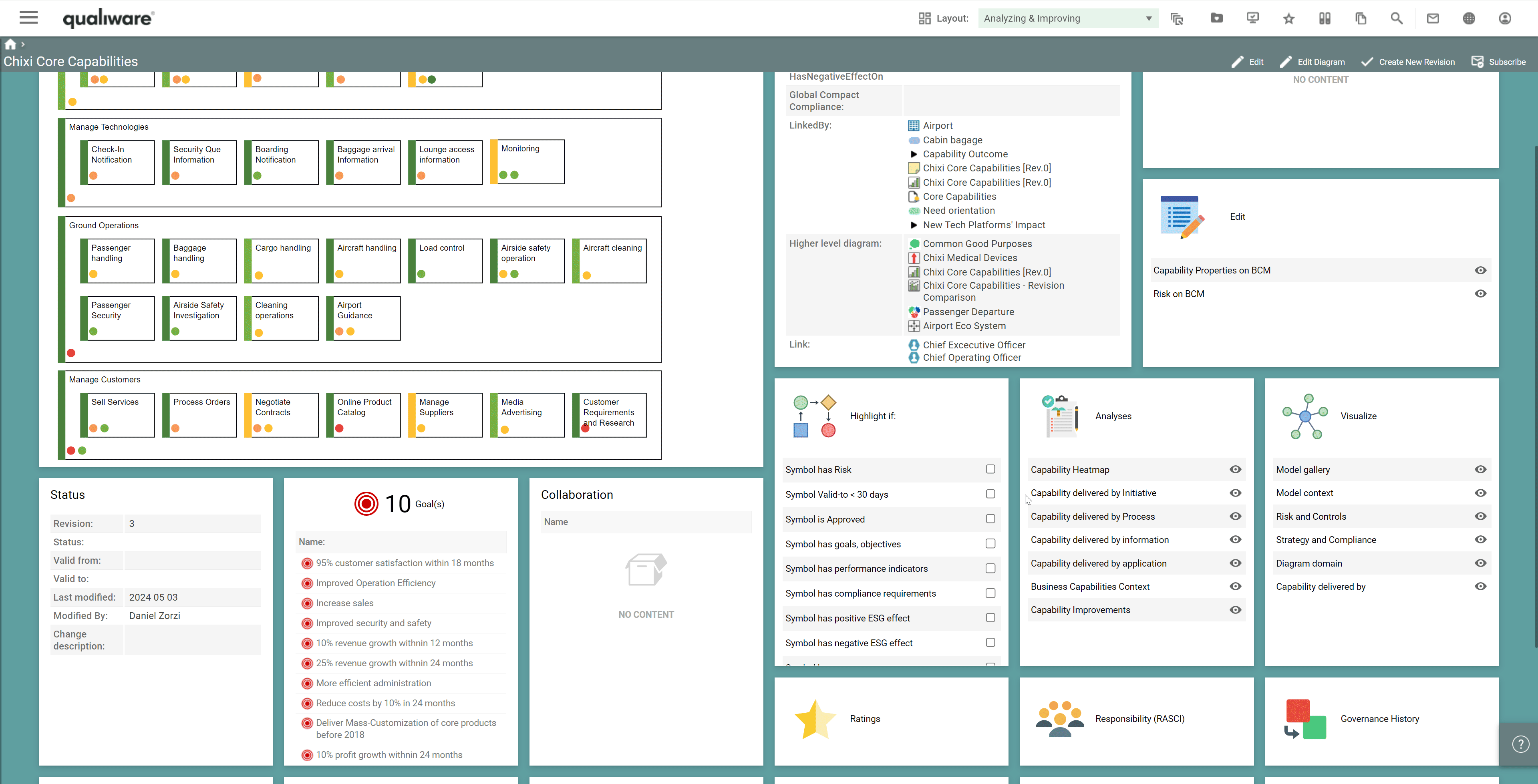Ensure that the IT systems and applications that support business capabilities are aligned with the capability roadmap. Identify any gaps or redundancies in the IT portfolio and prioritize investments to address them.
Aligning an organization’s business capabilities is crucial for identifying potential gaps or redundancies in its operations.
As an organization grows and gets an understanding of its business capabilities, some IT systems in the organization may become less relevant or redundant – others might be worth investing in and prioritizing.
If certain IT systems and applications are not realizing any Business Capabilities, they might prove to be irrelevant or redundant. Similarly, it might be worth investing in certain Applications if it is apparent that the application is delivering several Business Capabilities.
By analyzing and understanding how these capabilities align, organizations can improve their operational efficiency, optimize resource allocation, and mitigate risks.
Furthermore, aligning business capabilities facilitates a deeper understanding of the organization’s overall strategy and objectives, allowing for better decision-making and strategic alignment to the overall capability roadmap.
This enables organizations to prioritize investments and initiatives that are most closely aligned with their long-term goals, fostering a more agile and resilient business model.
By addressing gaps and redundancies in business capabilities, organizations can enhance their ability to adapt to changing market conditions and customer preferences. This adaptability not only improves the business value output, but also fosters a culture of innovation, as organizations are better equipped to identify and capitalize on emerging opportunities.
In summary, aligning business capabilities is essential for organizations to remain competitive and responsive in today’s dynamic business environment. It enables them to operate more efficiently, allocate resources effectively, and innovate strategically, ultimately driving long-term success and growth.
Aligning capabilities in QualiWare
The dashboard interface for business capabilities offers a convenient overview of previously identified capabilities that formulates the Core Capability Model. Through the QualiWare Analysis section, users can access various analyses of these capabilities and their alignment with organizational objectives.
This section also provides detailed insights and metrics, empowering stakeholders to make informed decisions about resource allocation and strategic planning. Additionally, it facilitates collaboration by providing a centralized platform for sharing insights and fostering transparency.
The dashboard interface also offers customizable features and visualization tools for tailoring analyses to specific business needs.
Prioritize investments
When it comes to prioritizing investments, utilizing the “Capability delivered” options in the analysis tile unveils a comprehensive spreadsheet showcasing how the capabilities in the Core Capability model are delivered by e.g. Applications and Processes.
It could also be relevant to see which capabilities are delivered by certain initiatives to understand which Initiatives will improve or change specific Capabilities.
If one would have applications that are delivering several Capabilities, or applications that are not delivering any Capabilities, it may lead me to assess these InformationSystems scores in terms of their Business Score, Technical Score and TIME assessment and prioritize investments accordingly.
In other scenarios it may be relevant to see which Capabilities that are not currently being delivered by any Applications. This may be areas for improvement where there is a gap in what the organizations wants to do strategically, and how they plan to execute on that operationally.
By employing these filters and analysis, users can discern which capabilities hold the utmost importance while exhibiting different degrees of alignment in the IT Portfolio. These specific areas represent prime opportunities for investment and enhancement, as they have the potential to yield substantial impact.

